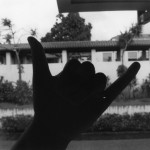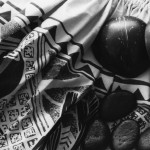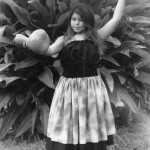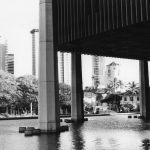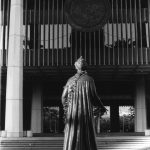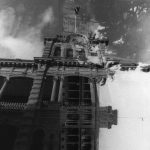He Hawaiʻi au mau a mau
I am a Hawaiian now and forever. Embrace my identity as a Hawaiian.
OVERVIEW:
This project is about exploring your relationship to culture through photography. While the the ʻōlelo noʻeau at the top of the page talks about Hawaiian identity, this project is about your authentic relationship to whatever culture you relate to most – whether or not that is Hawaiian culture is up to you.
Before you start shooting, think about your definition of culture. Where does culture come from? What influences a culture? How is culture shared/spread/perpetuated? What does culture look like? Where do you see culture around you?
This project is inspired by the video/TED-talk given by photographer Jimmy Nelson, in which he shares his perspectives of photographing “authentic” and “dying” cultures.
Think about how his talk regarding isolation, change and authenticity of culture made you feel. What kinds of assumptions must he be making to think that these tribes are in danger of dying? If he came to Hawai’i, do you think Jimmy Nelson would see Hawaiians and feel the need to photograph us because we could be “dying”? Or do you think he would view Hawaiians as no longer being “authentic”? Think about how you relate to your culture, the ‘aina, your ancestors and family.
Now watch this video of Wade Davis giving a talk on “Why Ancient Wisdom Matters in the Modern World.”
Compare their world view – how do these two photographers interact with their subjects differently? How do their views on culture/beauty/authenticity impact their imagery? If you could invite one of these photographers to photograph your family/culture, who would you choose?
This project is about using a modern tool like the camera to voice your reality and to depict the culture/place we experience and participate in today.
STUDENTS WILL BE ABLE TO:
- demonstrate an understanding of photography (camera operations & darkroom techniques)
- create meaningful work that they are proud of
- express oneʻs relationship to culture through photography
- Analyze how one’s understanding of the world is affected by experiencing visual imagery.
WHAT TO TURN IN
- ONE (1) Contact Sheet (24 images = 1 full sheet)
- TWO (2) 8″x10″ prints (full sheets now, not half sheets)
Below are examples of a few photographers who use photography to create culturally expressive images:
1) Kapulani Landgraf – Native Hawaiian artists and photography professor at Kapiʻolani Community College, Landgraf uses photography as a tool to honor and preserve her connection to Hawaiian culture and land. HEREʻs a great article on her work documenting the construction of the H-3. And HERE’s an HPR segment on her work Pono’iwi.
 2) Brandon Ng – “Utilizing a range of photographic approaches, Ng’s work explores the complexities of living in contemporary Hawaiʻi and how the past and the present socio-politico policies shape the future of the land and the people of Hawaiʻi. Through photographic expression, Ng aims to provide his viewers with a forum for conversation, while simultaneously exploring how the choices of an individual can impact a shared place.”
2) Brandon Ng – “Utilizing a range of photographic approaches, Ng’s work explores the complexities of living in contemporary Hawaiʻi and how the past and the present socio-politico policies shape the future of the land and the people of Hawaiʻi. Through photographic expression, Ng aims to provide his viewers with a forum for conversation, while simultaneously exploring how the choices of an individual can impact a shared place.”
3) Ed Greevy – Ed Greevy is a photojournalist who has documented protests, rallies, and individuals revolving land rights movements in Hawaiʻi throughout the Hawaiian Renaissance up to the early 2000s. His body of work is controversial to some, though no one would argue how prolific and heartfelt the scope of his photographs are.
4) Will Wilson – A contemporary Native American photographer, Wilson uses historical photographic processes when capturing portraits of contemporary Native Americans to reference the photographs made by Edward Curtis in 1900s of North American Indians. Much of Curtisʻ work is considered to be iconic documentary photographs, yet he was motivated by the idea that people of these tribes are passing away. Wilson makes modern photographs to combat this idea and show that Native Americans are still here 100 years later and arenʻt going anywhere. Hereʻs a great video on his work:
4) Robert Gallegos – Gallegos’ body of work “Autentico” explores his identity as a Mexican-American, struggling to find his place within a culture that is often portrayed in media through exaggerated stereotypes. In his work, he photographs himself playing these rolls – the migrant, the gang member, the felon – as a way of questioning the authenticity of cultural stereotypes.
5) Maxine Helfman – In her body of work, “Historical Correction” American photographer Maxine Helfman “recreates the poses of Flemish portraiture, replacing the faces of 17th-century elites with the faces of modern men and women of color. Her posed photos keep the collars and hats, expressions and stares, but instead of a white-washed roster of subjects, her portraits place a spotlight on the black models she collaborates with.”
EXAMPLES OF STUDENT WORK:
- Alaina Kedro, gr 10
- Dante Park, gr 9
- Kiara Moffit, gr 11
- Kiara Moffit, gr 11
- Sage Manoa, gr 11
- Tori Kekoa-Albert, gr 9
Aloha ‘Āina (Hawaiian patriotism; love for the land and its people): Students develop an in-depth relationship with places and communities that hold significance to them and strive to improve the well-being of such places, engaging in experiences that foster aloha for and lifelong allegiance to ka lāhui Hawai‘i and ka pae ‘āina o Hawaiʻi.
Mālama and Kuleana (Social agency, community consciousness): Students develop the passion and skills needed to engage with their ʻohana, communities, and others to achieve Hawaiian cultural vitality, political and social justice, environmental sustainability, and the overall well-being of their communities and larger global context.
NATIONAL CORE ARTS STANDARDS
RESPONDING – HS Proficient VA: RE.7.2.Ia
Enduring Understanding: Visual imagery influences understanding of and responses to the world.
- What is an image?
- Where and how do we encounter images in our world?
- How do images influence our views of the world?
CONNECTION – VA:Cn11.1.Ia – Anchor Standard 11:Relate artistic ideas and works with societal, cultural, and historical context to deepen understanding
Enduring Understanding: People develop ideas and understandings of society, culture, and history through their interactions with and analysis of art.
- How does art help us understand the lives of people of different times, places, and cultures?
- How is art used to impact the views of a society?
- How does art preserve aspects of life?

